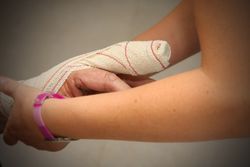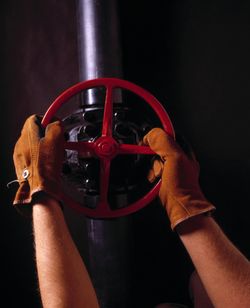 With St. Patrick’s Day around the corner, most people will be sporting their favorite green attire to avoid getting pinched on March 17. To most of us, a pinch isn’t taken very seriously. We remember pinching the cute girl or boy growing up in school, getting our cheeks pinched by our relatives who came from out of town, or getting a “pinch to grow an inch” during a birthday celebration.
With St. Patrick’s Day around the corner, most people will be sporting their favorite green attire to avoid getting pinched on March 17. To most of us, a pinch isn’t taken very seriously. We remember pinching the cute girl or boy growing up in school, getting our cheeks pinched by our relatives who came from out of town, or getting a “pinch to grow an inch” during a birthday celebration.
But, for many of those working today, getting pinched can become very serious injuries called pinch-points. A pinch-point is when a person or part of a person’s body is caught between moving parts of a machine, between the moving and stationary parts of a machine, or between material and any part of the machine. With these easy guides, you can know what a pinch-point is and how to keep them from happening.
You’re a Mean One, Mr. Pinch
Pinch-points can be as small as a pair of pliers slipping and pinching a hand causing a blood blister, to being crushed against a wall by a truck that was backing up. This hazard can happen at any time at the workplace.
A pinch-point injury on the job can be seriously disabling, even causing amputation or death. A serious pinch point injury can put a heavy emotional and financial burden on you or your family. If there is a place where equipment is transmitting energy, there is a potential pinch-point danger with that equipment.
There’s No Easy Way Out
Often pinch-point injuries are the result of improperly trained workers who don’t realize the dangers of machinery, or take shortcuts to get the work done more quickly. Work can be stressful with deadlines and training new people, but it’s important to keep in mind the safety rules and mechanisms that were put in place to keep you safe. Ignoring those procedures can put you at risk and cause more work for everyone else.
Never perform a task without proper training. It’s not uncommon for managers to place workers in front of a machine without proper training and expect them to perform their job, but it is up to the worker, for the sake of their health and life, to not work on equipment that they haven’t been properly trained for. The consequences could be serious.
Keep Your Guard Up
Pinch-point conditions are also one of the most difficult hazards to guard against. Improperly guarded punch presses, oscillating or reciprocating parts, heavy steel doors, heavy covers, and belt conveyors can inflict serious injuries.
Many pinch-point injuries occur when a machine is stopped temporarily for service or cleaning, so it’s extremely important to follow necessary procedures for lockout and tagout (LOTO). Workers can follow guard policies for when the machine is running, but when it’s stopped and the guard is removed, if the equipment is not de-energized, a worker is not safe.
A little thought will bring to mind the many pinch points in your workplace. Take some time to review your work station and those around you to see if there could be potential pinch-point dangers. You could spare an injury, even your own.






